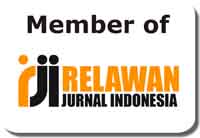English Live Caption in a Javanese Shadow Puppet Theatre: Systemic Functional Linguistics for Appraising the Beauty of Sagopi
Abstract
Keywords
Full Text:
PDFReferences
Arifin, M., & Hakim, A. R. (2021). Study of pandawa characters in Mahabharata’s story learned with Indonesian character education. Management, Business and Social Science (IJEMBIS) Peer Reviewed-International Journal, 1(2), 146–155.
Boroditsky, L. (2009). How does our language shape the way we think? Scientific American, 304(2), 63–70.
Diaz-Cintas, Jorge & Remael, Aline. (2021a). Subtitling: Concepts and practices. 10.4324/9781315674278.
Garzone, G. (2017). Food, culture, language and translation. Https://Doi.Org/10.1080/17447143.2017.1364255, 12(3), 214–221. Retrieved from https://doi.org/10.1080/17447143.2017.1364255
Khrisna, D. A. N. (2012a). The rude duryudana and the tricky Sengkuni. UNS Journal of Language Studies, 1(2), 1–2.
Khrisna, D. A. N., Nababan, M., Djatmika, & Santosa, R. (2016). Appraisal analysis on the main character of novel the old man and the sea and its three Indonesian-translated versions lelaki tua dan laut. Advanced Science Letters, 22(12), 4481–4484. Retrieved from https://doi.org/10.1166/ASL.2016.8193
Lehman-Wilzig, S. (2019). Autonomous, algorithmic, simultaneous translation systems in the glocal village: Consequences and paradoxical outcomes. In Handbook of the Changing World Language Map (Vol. 1, pp. 3891–3909). Retrieved from https://doi.org/10.1007/978-3-030-02438-3_55.
Leli, Halimah & Roni, Robandi & Yuliariatiningsih, Margaretha & Sutini, Ai. (2017). The role of wayang golek as prototype model in building mega skill characters of children. 10.2991/icece-16.2017.48.
Lv, Q., & Liang, J. (2018). Is consecutive interpreting easier than simultaneous interpreting? A corpus-based study of lexical simplification in interpretation. Https://Doi.Org/10.1080/0907676X.2018.1498531, 27(1), 91–106. Retrieved from https://doi.org/10.1080/0907676X.2018.1498531
MacHácek, D., & Bojar, O. (2020). Presenting simultaneous translation in limited space. In CEUR Workshop Proceedings (Vol. 2718, pp. 34–39).
Martin, J. R., & Rose, D. (2007a). Working with discourse: Meanng beyond the clause. London: Continum.
Martin, James R, & White, P. R. R. (2005). The language of evaluation: The appraisal framework. New York: Palgrave Macmillan.
Munday, J. (2018). A model of appraisal: Spanish interpretations of President Trump’s inaugural address 2017. Perspectives, 26(2), 180–195. Retrieved from https://doi.org/10.1080/0907676X.2017.1388415
Oladunni, D.-A., & Tomi, O. F. (2018). Link between language and character development: People’s perception. Advances in Social Sciences Research Journal, 5(12), 363–369. Retrieved from https://doi.org/10.14738/assrj.512.5417
Pandin, M.G. (2020). Moral-ethics-belief values towards Indonesian puppet (wayang kulit) performance arts.
Pradita, L. E., Hermawan, W., & Saddhono, K. (2017). Strengthening the value of character through shows shadow puppets. In Proceeding of the 2nd INCOTEPD (pp. 21–22).
Pramono, Y. L., Suyanto, S., & Wahida, A. (2017). Shadow puppet arts as the formation of young generation character. Proceeding of International Conference on Art, Language, and Culture, 397–404.
Ramli, Wan. (2012). The contribution of shadow puppet's show through engaging social communication in modern society. Procedia - Social and Behavioral Sciences. 35. 353–360. 10.1016/j.sbspro.2012.02.098.
Reyhner, J. (2017). Affirming identity: The role of language and culture in American Indian education. Cogent Education, 4(1). Retrieved from https://doi.org/10.1080/2331186X.2017.1340081
Romero-Fresco, P., & Eugeni, C. (2020). Live subtitling through respeaking. In B. Ł. & M. Deckert (Eds.), The palgrave handbook of audiovisual translation and media accessibility. palgrave studies in translating and interpreting. Palgrave Macmillan, Cham. Retrieved from https://doi.org/10.1007/978-3-030-42105-2_14
Roxas, J. C., Richards, D., Bilgin, A., & Hanna, N. (2017). Exploring the influence of a human-like dancing virtual character on the evocation of human emotion. 1–15. Retrieved from https://doi.org/10.1080/0144929X.2017.1386714
Saleh, M. (2014). Your language your character. Language Circle: Journal of Language and Literature, 9(1), 1–8. Retrieved from https://doi.org/10.15294/lc.v9i1.3214
Subiyantoro, S., Kristiani, K., & Wijaya, Y. S. (2020). Javanese cultural paradoxism: A visual semiotics study on wayang purwa characters of satria and raseksa figures. Harmonia: Journal of Arts Research and Education, 20(1), 19–28. Retrieved from https://doi.org/10.15294/harmonia.v20i1.23838
Ulvydienė, L. (2014). Psychology of translation in cross-cultural interaction. Procedia - Social and Behavioral Sciences, 116, 217–226. Retrieved from https://doi.org/10.1016/j.sbspro.2014.01.197
White, P. R. R. (2016). Constructing the “stranger” in camus’ l’étranger-registerial and attitudinal variability under translation. The Journal of Translation Studies, 17(4), 1–32.
Widagdo, T., Djatmika, D., & Yustanto, H. (2019). Analysis characteristics of antawacana as reflections on the character of werkudara in wayang purwa. BASA, 1–6. Retrieved from https://doi.org/10.4108/eai.20-9-2019.2296757
Wu, H. (2013). Appraisal perspective on attitudinal analysis of public service advertising discourse. English Language and Literature Studies, 3(1). Retrieved from https://doi.org/10.5539/ells.v3n1p55
Yulistio, D., & Purwadi, A. J. (2019). Study on structure and values education in stories wayang kulit. International Seminar and Annual Meeting BKS-PTN Wilayah Barat, 1(1), 136–145.
Zheng, B., Zheng, R., Ma, M., & Huang, L. (2020). Simultaneous translation with flexible policy via restricted imitation learning. In ACL 2019 - 57th Annual Meeting of the Association for Computational Linguistics, Proceedings of the Conference (pp. 5816–5822). Retrieved from https://doi.org/10.18653/v1/p19-1582.
DOI: http://dx.doi.org/10.31332/lkw.v0i0.3810
Copyright (c) 2022 Dyah Ayu Nila Khrisna, Djatmika Djatmika

This work is licensed under a Creative Commons Attribution-ShareAlike 4.0 International License.
Langkawi: Journal of The Association for Arabic and English indexed by:


















.png)
.png)

.png)
2.png)








